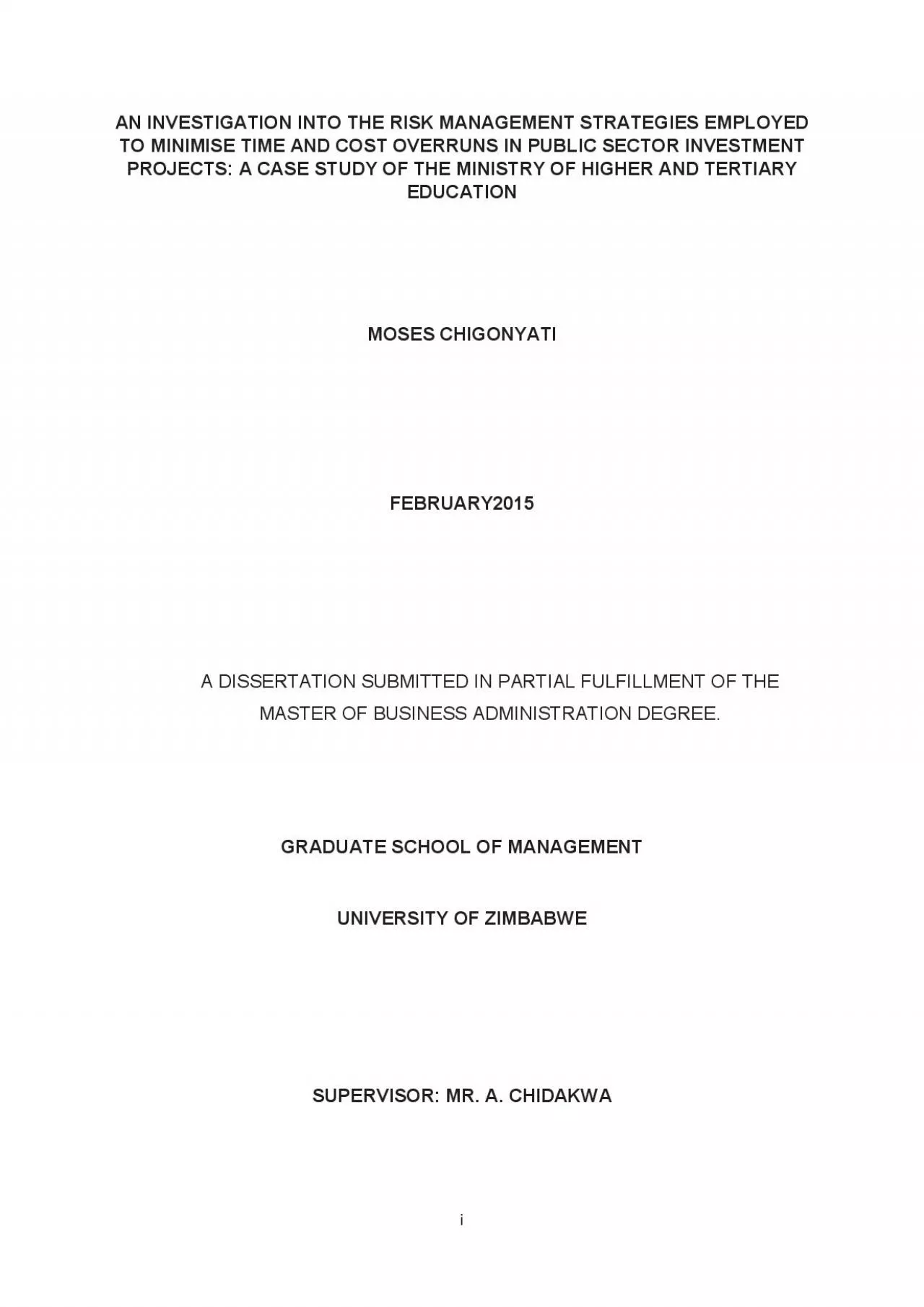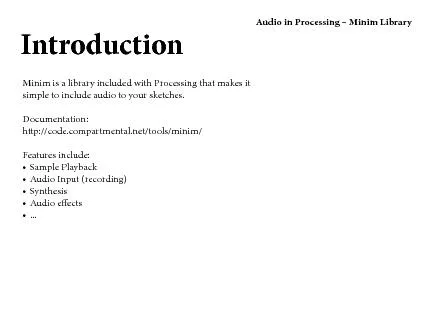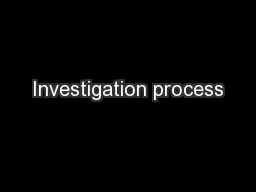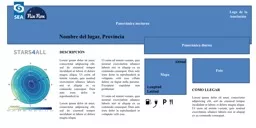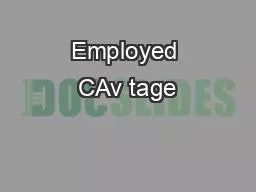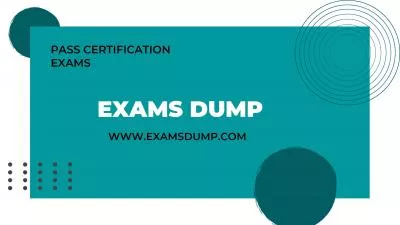PDF-AN INVESTIGATION INTO THE RISK MANAGEMENT STRATEGIES EMPLOYED TO MINIM
Author : anastasia | Published Date : 2021-09-26
DECLARATION I MOSES CHIGONYATI do hereby declare that this dissertation is the result of my own investigation and research except to the extent indicated in the
Presentation Embed Code
Download Presentation
Download Presentation The PPT/PDF document "AN INVESTIGATION INTO THE RISK MANAGEMEN..." is the property of its rightful owner. Permission is granted to download and print the materials on this website for personal, non-commercial use only, and to display it on your personal computer provided you do not modify the materials and that you retain all copyright notices contained in the materials. By downloading content from our website, you accept the terms of this agreement.
AN INVESTIGATION INTO THE RISK MANAGEMENT STRATEGIES EMPLOYED TO MINIM: Transcript
Download Rules Of Document
"AN INVESTIGATION INTO THE RISK MANAGEMENT STRATEGIES EMPLOYED TO MINIM"The content belongs to its owner. You may download and print it for personal use, without modification, and keep all copyright notices. By downloading, you agree to these terms.
Related Documents

